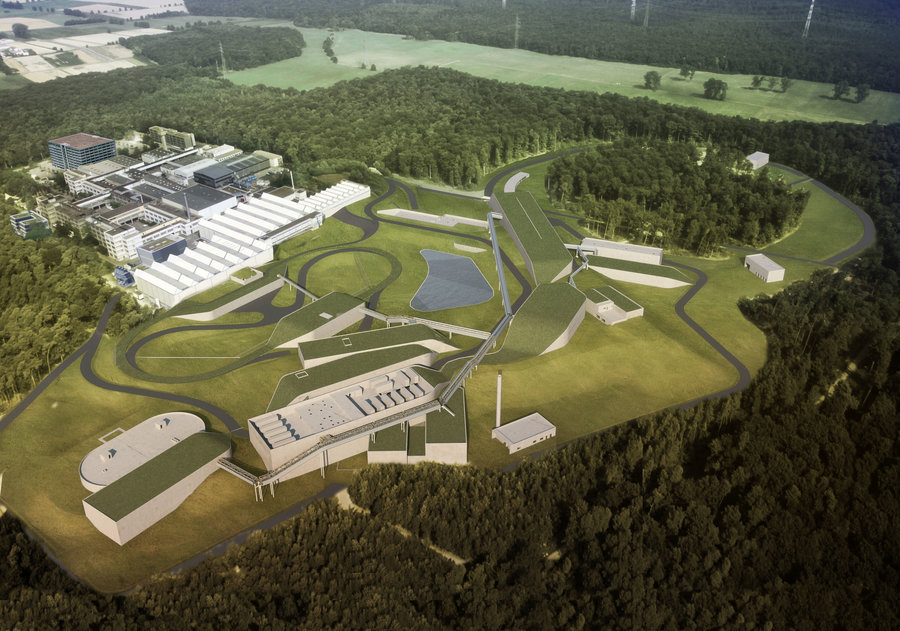Kill a tumor in less than a second: FLASH radiotherapy with heavy ions
31.08.2022 |
The tumor therapy with charged particles is one of the most promising applications in the fight against cancer. At the existing research facility of the GSI Helmholtzzentrum für Schwerionenforschung, as well as with the FAIR accelerator facility currently under construction here, scientists are working to improve the method through new technologies and treatment procedures and make it even more effective. Thereby, the new FLASH method is a promising way. An important step has now been achieved in investigating the efficacy of this method with high-energy carbon ions. An international research team led by GSI Biophysics reports on this in "Radiotherapy and Oncology", the official journal of the European Society for Therapeutic Radiation Oncology (ESTRO). The results were gained during the FAIR Phase 0 experimental period.
FLASH experiments focus on very short and very high-intensity radiation pulses, where the treatment dose is delivered in sub-second timescales. The FLASH effect is a potential breakthrough in radiotherapy because ultra-high dose-rate irradiation can substantially widen the therapeutic window. In fact, pre-clinical data show that when the dose is delivered in less than a second it destroys the tumor but spares the surrounding healthy tissue. While this normal tissue sparing at high doses and short irradiation times has been demonstrated with electrons, photons, and protons, so far evidence with heavy ions is limited to in vitro cell experiments. Now the efficacy of the new FLASH radiotherapy using high-energy carbon ions delivered at an ultra-high dose rate was demonstrated for the first time in living organisms.
The scientists, including the head of the GSI Department of Biophysics, Professor Marco Durante, and his team, as well as researchers from the University of Naples Parthenope, the German Cancer Research Center DKFZ and the University of Heidelberg, present these first in vivo results in their current publication. The team with lead author Dr. Walter Tinganelli (GSI) has shown a 150 millisecond pulse of high-energy carbon ions reduces normal tissue toxicity compared to conventional irradiation in more than a minute and sterilizes the cancer (a mouse osteosarcoma). Furthermore, with great surprise, the investigators found that FLASH irradiation reduces the number of lung metastases generated by the primary tumor. FLASH with carbon ions is therefore not only able to spare the healthy tissue surrounding the tumour target, but may also elicit a systemic effect able to destroy distal metastasis.
Professor Durante, a renowned expert in the field of particle therapy and recently elected president of the international organization “Particle Therapy Co-Operative Group (PTCOG)” summarizes: “We demonstrated the FLASH effect with high-energy carbon ions for the first time in vivo. The results are important and very useful for understanding the FLASH mechanisms and for possible applications of the ultrahigh dose rate particle therapy in clinical settings. However, much more research needs to be carried out in order to translate this laboratory experiments in clinical settings. The goal is always to answer the central question: How should radiation be applied to get the most efficient, the best possible treatments in the fight against cancer?”
The Scientific Managing Director of GSI and FAIR, Professor Paolo Giubellino, is also delighted about the promising results, obtained during the FAIR Phase 0 experimental period: “Modern radiobiology will substantially benefit from beams with even higher intensities, such as we will have at the FAIR facility currently under construction. FLASH is a first example of this. The present results also show the great potential of carbon ion therapy, pioneered at GSI. Research on this highly relevant topic will continue in the coming years. The first stage of the FAIR experimental program, FAIR Phase 0, already offers outstanding opportunities in this field.” (BP)















